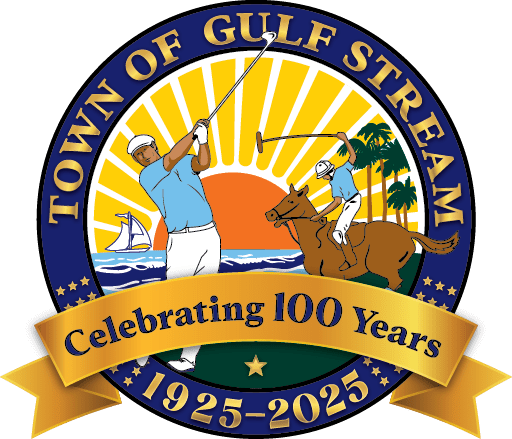History
History of Gulf Stream
During the early 1920s, a group of prominent investors made arrangements and secured land for the development of an exclusive golf course which was to be located south of Palm Beach in Lake Worth. Within a year of its inception, the proposed location of the golf club was changed to the present site at Gulf Stream. Donald Ross was retained to design the golf course and J.R. Brooks was hired to build it.
With the completion of the beautiful Spanish-style clubhouse, designed by the well-known architect Addison Mizner, the Gulf Stream Club opened for play in 1924. As early as 1923, rumors of a polo field in the town had been circulating and by June 1924, the initial phase of development had begun. Although the official season was not until 1927, the first games were held in 1926 and the polo club became an instant success. The club soon became known as the “Winter Polo Capital of the World” and “The Birthplace of Florida Polo”. An era passed into history in the 1960s when the last of the famous Gulf Stream Polo Club fields was converted into home sites and a par-three golf course. The influence and prestige of polo and the Gulf Stream Golf Club, which still functions today, can be detected throughout the town.
The success of both the Gulf Stream Golf Club and the polo fields drew people to the town and became a major force behind the growth and development of the town. People had been purchasing tracts of land and building mansions along the beachfront as early as 1923. By 1925, many of the houses were completed, and officers and members of the Gulf Stream Golf Club were influential in getting the Florida Legislature to grant a charter establishing Gulf Stream as a town.
By 1930, the town was firmly established as a winter resort for the wealthy. Although early houses were typically mansions, today the town is extensively subdivided, with fewer large mansions and more moderate-sized, distinguished homes. The majority of the town grew as subdivisions between the Atlantic Ocean and the Intracoastal Waterway. The only exception is the Place au Soleil subdivision, established in 1960 and located west of the Intracoastal Waterway. In an effort to maintain a tranquil setting, obtrusive commercial and industrial uses were prohibited long ago. More recently, several of the remaining vacant beachfront lots were upgraded to single-family zoning from previous multiple-family designations.
